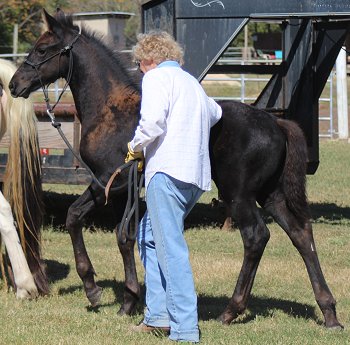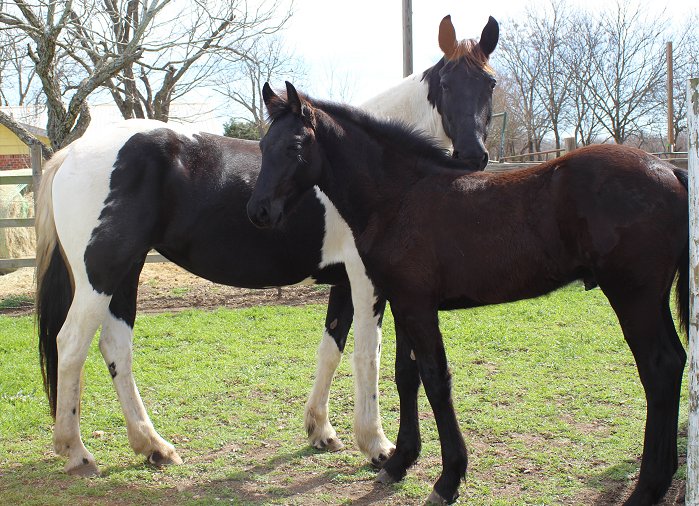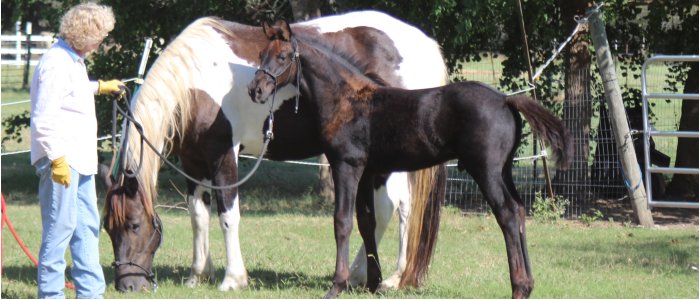 Many people believe that it is the dam that dictates a foal’s temperament. However, a horse’s temperament has to be divided into what is affected by nature (heredity and genes) and what is affected by nurture (the environment surrounding its life).
Many people believe that it is the dam that dictates a foal’s temperament. However, a horse’s temperament has to be divided into what is affected by nature (heredity and genes) and what is affected by nurture (the environment surrounding its life).
At birth, a foal’s temperament is derived from the influence of its parents’ genes (recessive and expressed) – just like every other trait. Two cold-blooded horses will generally produce a foal whose genes dictate that he should also be laid back and easy.
Perhaps the confusion comes in when nurture is added to the mix. While he has an equal chance of inheriting his dam’s or sire’s temperament, it is the dam who imprints her attitudes on his behavior starting when his little body hits the ground.
Her attitude toward her handlers is of paramount importance. Horses learn by “social” learning. They watch how other horses react to situations and learn what the appropriate behavior should be. If the dam is quiet and trusting, there is a good chance that the foal will be likewise. If she is hot, jumpy, suspicious, or aggressive you have a recipe for disaster.
 A foal’s attitude toward his handlers is also affected by imprint training during which humans become surrogates for the mother (like grandparents). Done during the first, formative 48 hours after birth, young horses accept humans as part of their nurturing herd and become pre-disposed to take handling and direction from them.
A foal’s attitude toward his handlers is also affected by imprint training during which humans become surrogates for the mother (like grandparents). Done during the first, formative 48 hours after birth, young horses accept humans as part of their nurturing herd and become pre-disposed to take handling and direction from them.
The sum of all of these parts is that the dam has the greater influence, but not through heredity alone. A great dam, helps you raise a great foal.
What about weaning and temperament?
We believe that the dam has a huge influence on her baby’s actions and reactions, so we leave our foals with their dams until 6-7 months old. This decision is predicated on the fact that the mare is healthy, has superb temperament, is easily handled, and is relaxed in all situations to impart her world view to the foal.
By 3 months, the baby’s nutrition is being supplemented by his foraging on his own as well as eating from his mother’s grain and supplement bowls. We have literally never had a foal that was poor or unhealthy because he was left with his mother. And, to further support this practice, wild horses do not naturally wean their foals until this age or much older. Even pregnant wild mares do not wean until about 10 months – just in time to interrupt lactation to develop new colostrum for a new foal.
Yes, she needs more nutrition to support her lactation and the drain on her resources as the foal gets larger. But a “thin” mare who is otherwise healthy just needs more calories. Feed the mare, don’t wean the colt.

There are other drawbacks to weaning too early. Much research shows that foals weaned at an early age are at higher risk of developing behavior issues caused by isolation from their peers and herd, improper diet with well-intentioned over-supplementation, and being stalled or confined during the growth of the long bones. Additionally, a higher incidence of Developmental Orthopedic Disease is frequently seen in early-weaned, over-supplemented foals.
There seems to be little to discourage his staying by her side until his half year mark, and many benefits. His dam will continue to teach and influence him throughout.
